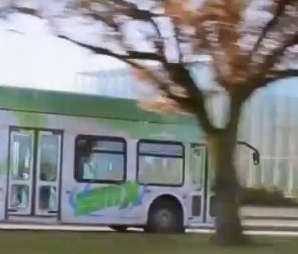
Bus Rapid Transit Worksession Set For Oct. 7
 The Montgomery County Council’s Transportation, Infrastructure, Energy and Environment (T and E) Committee will hold the first of five planned work sessions on the Countywide Transit Corridors Functional Master Plan at 9:30 a.m. on Oct 7.
The Montgomery County Council’s Transportation, Infrastructure, Energy and Environment (T and E) Committee will hold the first of five planned work sessions on the Countywide Transit Corridors Functional Master Plan at 9:30 a.m. on Oct 7.
The primary purpose of the master plan is to identify the specific lines and approximate station locations for the proposed bus rapid transit (BRT) lines within Montgomery County, as well as the minimum rights-of-way required for the segments in each line.
The T and E Committee, which is chaired by Roger Berliner and includes Councilmembers Nancy Floreen and Hans Riemer, will meet in the Third Floor Hearing Room of the Council Office Building at 100 Maryland Ave. in Rockville. The meeting will be televised live by County Cable Montgomery (CCM—Cable Channel 6 on Comcast and RCN, Channel 30 on Verizon). The broadcast also will be streamed through the County Web site at www.montgomerycountymd.gov .
Bus Rapid Transit would be a public transportation network where modern designed buses run on dedicated lines.
The County Planning Board is recommending a master-planned network of eight BRT lines, covering about 81 miles and 101 stations. Two of the corridors–Georgia Avenue and Maryland Route 355—are each split into two segments due to their length, so the Draft Plan presents the system as 10 corridors. The BRT network would be in addition to the Corridor Cities Transitway, a master-planned BRT line between Shady Grove and Clarksburg. This system is considerably pared down from the 16.5-mile network of exclusive bus lanes proposed by County Executive Isiah Leggett’s Transit Task Force in May 2012.
Portions of three of these lines are already in master plans: Georgia Avenue North (Corridor 1) between Glenmont and Olney; Veirs Mill Road (Corridor 10) within Aspen Hill; and Maryland Route 355 South (Corridor 4) within White Flint.
The Georgia Avenue Busway and Veirs Mill Road BRT Line are in project planning by the Maryland Department of Transportation, funded with $5 million and $6 million, respectively, provided by the County. Project planning also is underway for the White Flint segment of Corridor 4, funded as part of the White Flint District West Transportation project.
Fundamentally, the Master Plan should make three types of recommendations for each corridor: the route; the general location of stations; and the minimum right-of-way needed. Even those recommendations will be considered as guides rather than prescriptions. A subsequent project planning study would likely indicate that a route should be diverted slightly to serve a major destination.
The transit corridors master plan also proposes establishment of several Bicycle-Pedestrian Priority Areas and the addition of a third track on the CSX Metropolitan Branch between Metropolitan Grove and Frederick County to allow for the potential for MARC rail service during other than weekday peak periods.
The committee Council’s Transportation, Infrastructure, Energy and Environment Committee is scheduled to hold as many as five worksessions on the plan. The tentative dates for the other worksessions are Oct. 11, 14, 18 and 21.

I was at the first public meeting about BRT, Sept 24. I live in the area affected by this:
“Portions of three of these lines are already in master plans: Georgia Avenue North (Corridor 1) between Glenmont and Olney; Veirs Mill Road (Corridor 10) within Aspen Hill; and Maryland Route 355 South (Corridor 4) within White Flint.
These were approved before public comment was ever gathered in September.
This Council is deeply wrong to approve these before extensive public input and talks with the public. No, people don’t want their streets “repurposed” for what will eventually cost billions of tax dollars. No, middle class older neighbourhoods shouldn’t become railroads so richer parts of the county can excuse not making changes to their streets.
A gift of 6 million dollars to force through a 2.3-10 billion dollar project where it’s unwanted and will do the most damage – is not a gift.
The State could better put use of that money to add more buses and bus routes to MetroBus and RideOn’s existing foundations. They could use it easily and more efficiently.
Sonya, George Leventhal has kindly let me know that the Master plan for the BRT involving Olney-Wheaton-Glenmont has not been approved. It was a draft. I was upset at first, much less so now.
Thank you!